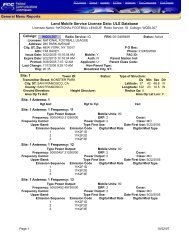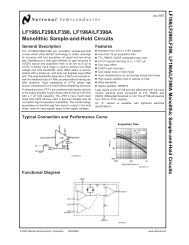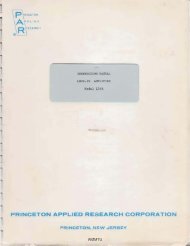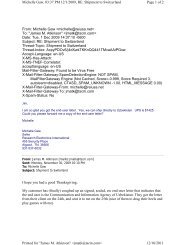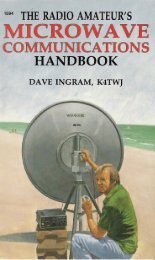A License Plate Recognition and Speed Detection System - Index of
A License Plate Recognition and Speed Detection System - Index of
A License Plate Recognition and Speed Detection System - Index of
You also want an ePaper? Increase the reach of your titles
YUMPU automatically turns print PDFs into web optimized ePapers that Google loves.
experience high traffic volumes or high speeds where stop signs are not appropriate. A second<br />
alternative is to adjust the signal’s timing to provide a longer yellow light. Even where the<br />
signal’s yellow phase had been lengthened, people still ran the red light. A third suggested<br />
alternative has been to change the geometry <strong>of</strong> the intersection to make the traffic signals more<br />
visible to drivers.<br />
However speed <strong>and</strong> distraction are the main culprits resulting in drivers running red<br />
lights. Proponents <strong>of</strong> these traffic control devices claim that the gain in safer roadways is<br />
measurable. Indeed, both the Insurance Institute for Traffic Safety <strong>and</strong> the National Highway<br />
Traffic Safety Commission supports their use. The cameras photograph only the vehicle’s license<br />
plate thereby reducing the privacy issues. Adequate notice is given to the persons receiving the<br />
citation to allow them to obtain legal counsel. The public highway does not provide for the same<br />
expectation <strong>of</strong> privacy that is accorded a person's home. All drivers operate their vehicles in plain<br />
<strong>and</strong> open view. Finally, in all states <strong>of</strong> the Union, speeding <strong>and</strong> running traffic lights is against<br />
the law. Connecticut was the first state to adopt speed laws in 1901; 12 mph in the city <strong>and</strong> 15<br />
mph in rural areas (Ref. 23).<br />
The preceding was a necessarily brief overview <strong>of</strong> the legality <strong>of</strong> these traffic control<br />
devices. For those interested in this area, we urge you to follow up with the references <strong>and</strong><br />
resources provided at the end <strong>of</strong> this work.<br />
79





